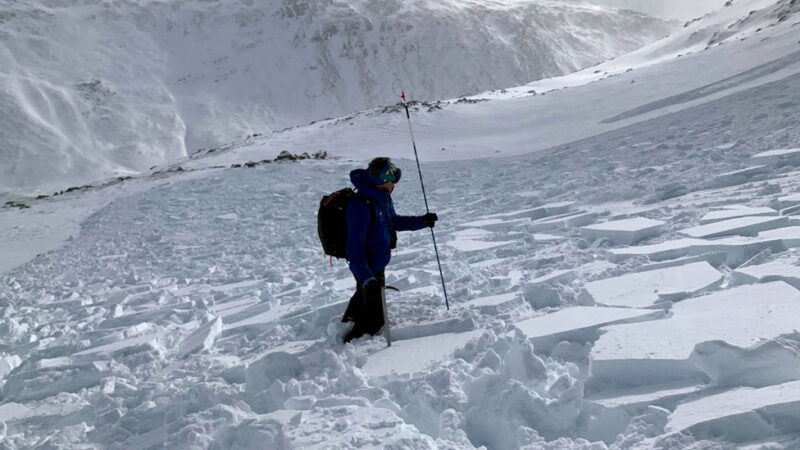Avalanche Hazards
Avalanches are one of the major hazards when ski-touring both in Scotland and even more so in the bigger mountains of the Alps, Norway and further afield. Every winter people are caught and injured or killed in avalanches in Scotland.

Avoidance
Avoiding being avalanched is key. As snowsport-tourers we like to go where the snow is and so for us the risks can be greater and avoidance requires more careful decision making than when on foot.
Learn how to read and apply avalanche forecasts provided by the Scottish Avalanche Information Service (SAIS). Factor this into your planning and then, coupled with your own on-the-hill observations of the weather and snowpack, use this information to make safe travel decisions through your journey and at key points in the day.
Install the SAIS ‘Be Avalanche Aware’ app on your phone – it will help you make good decisions.
The White Cross Code
Avalanche information can feel overwhelming, so the club has developed a simple, easy to remember guide to help you to decide whether to cross avalanche terrain we call ‘The White Cross Code’. This asks you to:
- STOP
- LOOK
- THINK
- DECIDE
You can download a PDF of the Code here. Keep it handy on your phone or print it out and keep it your jacket pocket.
Rescue
If you made some bad travel decisions and have been avalanched, then you will need immediate rescue. In Scotland most victims suffer trauma from rocks or being swept over steep ground. First aid and rapid rescue & medical attention will be vital.
Burial resulting in asphyxiation is the other key danger and, statistically, buried victims only have 15 minutes to survive. This means your companions will need to find you and dig you out – outside help like mountain rescue will never arrive quickly enough and it is impossible to dig yourself out. Needless to say, you should never be in avalanche terrain on your own.
Rescue Equipment
When touring off-piste with the club (or at any time) you must carry:
- Transceiver
- Shovel
- Probe
Transceivers should be modern ‘3-axis’ digital types (older analogue types are no longer acceptable). See here for more detailed information on transceivers. Shovels should be metal and probes should be at least 2 meters long.
Rescue Skills
It is not enough to simply carry rescue equipment – you must also know how to use it effectively. Avalanche rescues are very stressful and these skills must be learned through training and then kept fresh with regular refreshers (practice at least once per season). For an example of a realistic rescue scenario, watch this video from Salomon.
Avalanche Training
SAIS offer free online awareness training and is a must-do for anyone going to the Scottish backcountry.
The French avalanche specialists ARVA also offer an excellent free online course that is simple, clear and highly recommended.
Rescue training is best learned on a practical course. Avalanche Geeks offer a number of excellent courses in Scotland and the Alps and have many good resources on their website.
Much of the theory can be learned from books and online videos -there is a wealth of content out there.
If you have any questions or need advice please contact us.

